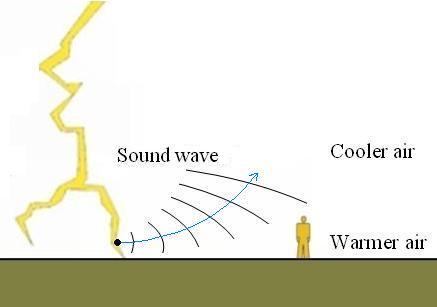Why We Cannot Hear the Thunder of a Distant Lightning?
In the last episode, we mentioned that one might see a lightning flash but would not hear any thunder if the storm was far away. Let's take a look why this is so.
Air is the medium for sound to propagate (you hear no sound from a vacuum). The speed of sound in air depends on several factors including the air temperature. Usually, sound travels faster in warm air than in cool air.
For most of the time, the air near the ground is warmer than the air above (please refer to the article "The higher you climb, the colder it gets" for details). Since air temperature decreases with height, the speed of sound also decreases with height. This means that for a sound wave traveling close to the ground, the part of the wave closest to the ground is traveling the fastest, while the part farthest above the ground is traveling the slowest. As a result, the wave changes the direction it propagates and bends upwards. The longer it travels, the more it will be refracted away from the ground. Typically, thunder is seldom heard by a ground observer beyond 15 kilometres from the storm.

Sound waves are refracted upwards if air temperature decreases with height (Objects in the diagram are not to scale)
In the lower atmosphere, sometimes an inversion exists, i.e. the temperature increases with height. The sound of thunderstorm will then be refracted downward towards the ground. In some cases it can be rather focused, leading to an intense clap or several claps of thunder.